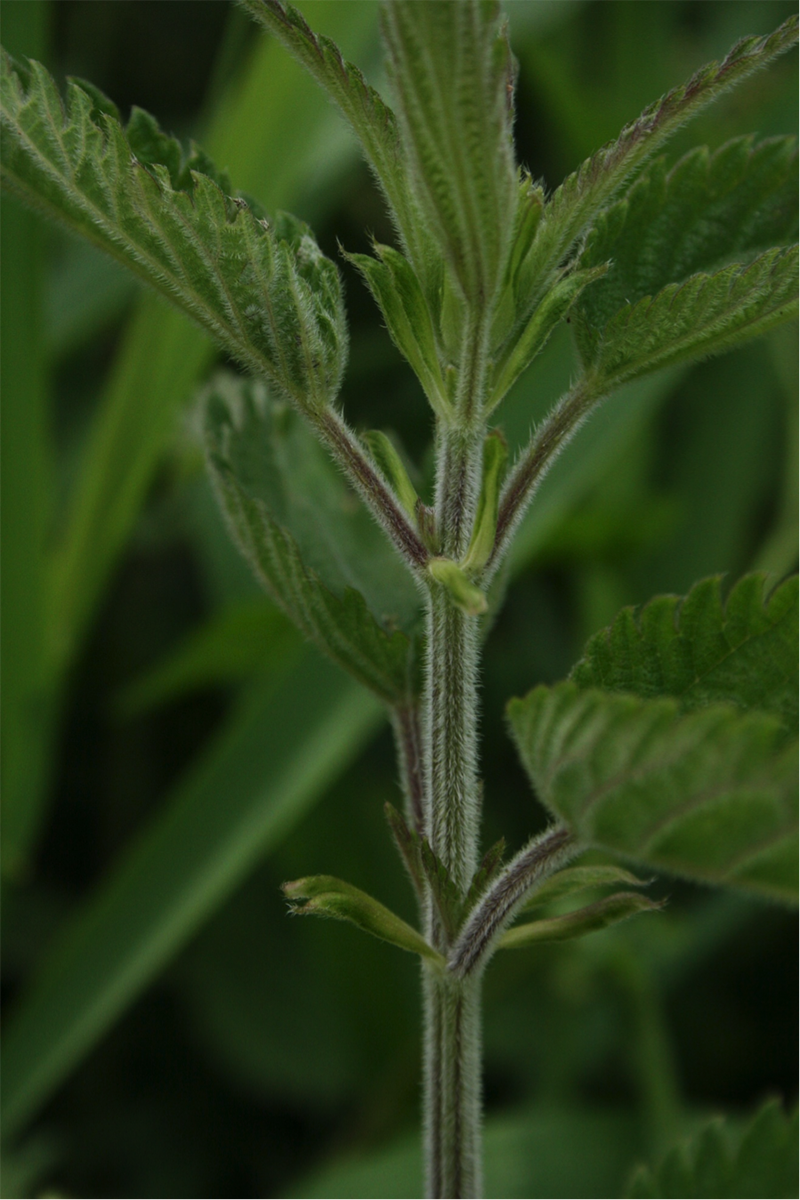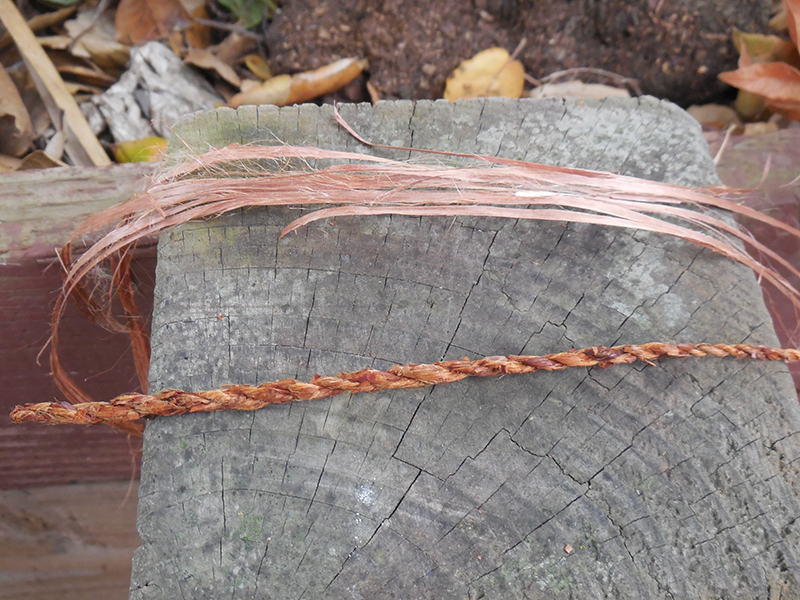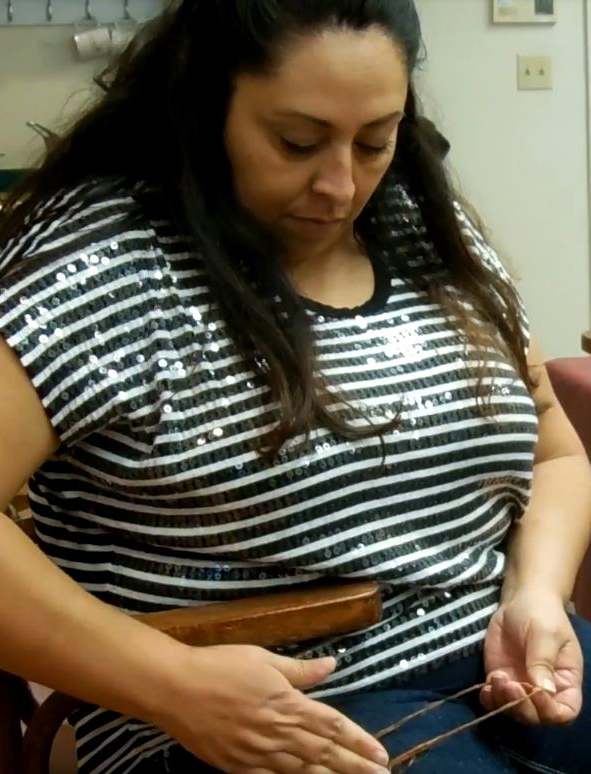From Plant to String
Ohlones and Miwoks made string, rope, fishing nets, and carrying nets from fibers located on the stems of dogbane, milkweed, and stinging nettle. Ohlones and Miwoks gathered dogbane stalks in the wintertime, after the sap had dropped into the underground stems (rhizomes) and the leaves had fallen off. Before gathering the stems, they said prayers and left offerings of thanks. By annually cutting the stalks, a form of pruning, Ohlones and Miwoks caused the re-growth of new, healthy shoots; removed plant material that would have otherwise rotted or become diseased; and caused the spread of new rhizomes.


Sabrina, Ruth’s eldest grandchild, decided to specialize in dogbane cordage making when she realized that she could somehow make “perfect” string after two or three tries. Sabrina had wanted to learn an ancestral skill at which she could excel in order to both connect with and to honor her ancestors. After exposure to varied old-time skills in 1997, Sabrina knew that dogbane cordage making was the one she had been looking for.
Sabrina learned to gather dogbane and make her cordage with “pleasant thoughts and a positive attitude,” an ancestral value that appealed to her. She also relished learning something that had once been a largely male pursuit.
 “When I make cordage out of dogbane, it gives me a feeling of peace in my soul and a connection to this beautiful earth and my ancestors.”
“When I make cordage out of dogbane, it gives me a feeling of peace in my soul and a connection to this beautiful earth and my ancestors.”
To secure the future of dogbane cordage making, Sabrina demonstrates this ancient skill at park events and schools. Sabrina’s four children have accompanied her since birth to these demonstrations, sparking a lifelong love of and interest in the skill. While Sabrina’s boys have recently shown more of an interest in fire making, she hopes that her children will someday take her place as the next generation of Ohlone cordage makers.